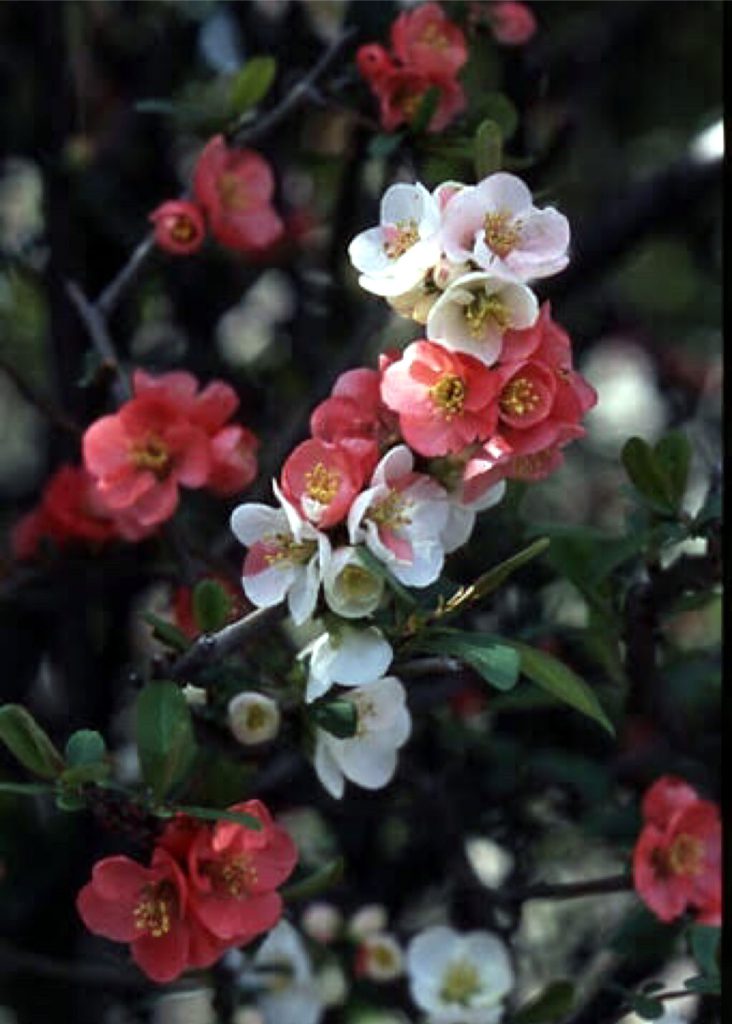
It’s Sho-kan(the first half of the coldest season, January 6–19) and Kan-no-iri(the entrance of the cold day) today. Although it is said that the full-fledged winter is coming from now on, the number of Boke(Japanese quince flowers) is increasing. The best time to see the flowers of Boke is around March to May, when it gets warmer, but there are also varieties that bloom regardless of the season, such as “Kanboke”, which begins to bloom around November, which is the end of autumn. In China, the place of origin of Boke, it is called “hoshunka,” meaning “a flower that emits the scent of spring before any other flower.” It is also the origin of the flower language of Boke, “pioneer”. It came to Japan during the Heian period and spread throughout the country. In addition to being planted as a garden tree, Boke is also popular as a potted plant, hedge, bonsai, cut flower, etc., and is popular as a spring flower. The kanji character for 木瓜 is similar to a melon, and the name comes from the fact that the tree looks like a melon. After flowering, it produces blue fruitsin September to October. The fruit is fragrant and can be enjoyed by making fruit wine and jam.
今日は小寒、寒の入りです。これからが本格的な冬到来と言うのに、ボケ(木瓜)の花が数を増やしています。ボケの花は温かくなる3~5月頃に見頃を迎えますが、秋の終盤にさしかかる11月頃から咲き始める「寒木瓜(カンボケ)」や、季節を問わず咲く品種もあります。ボケの原産地中国では「放春花」という名前で表記され、『どの花よりも先に春の香りを放っている花』という意味があるそうです。ボケの花言葉「先駆者」の由来でもあります。日本には平安時代に渡来して各地に広がりました。 ボケは庭木として植えられる他、鉢植えや生垣、盆栽、切り花などとしても人気が高く、春の花として親しまれています。漢字の「木瓜」は実がウリに似ており、木にウリがなったようにみえることからつけられました。花後の9~10月には青い実をつけます。実は香りがよく、果実酒やジャムが作って楽しむことができます。
